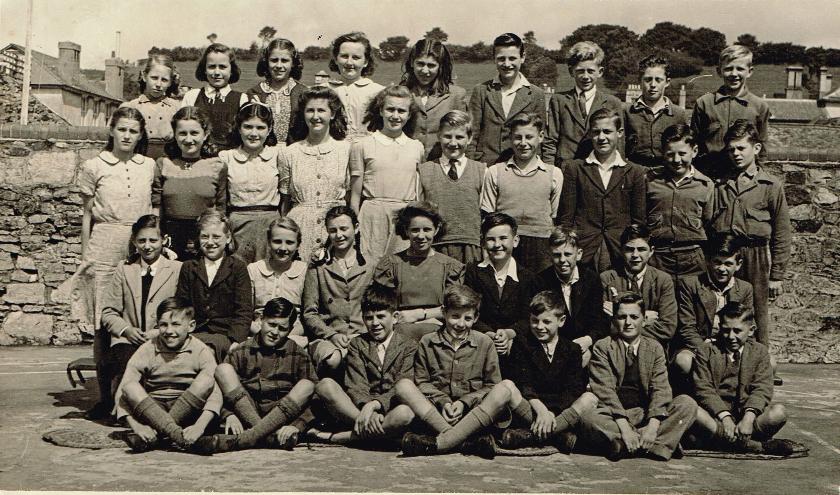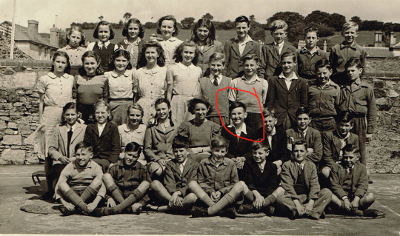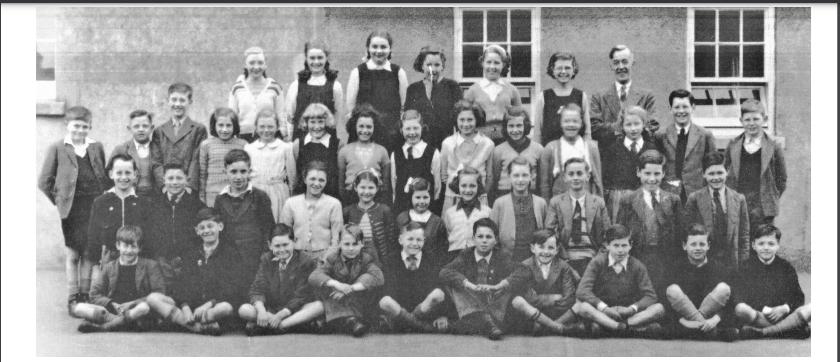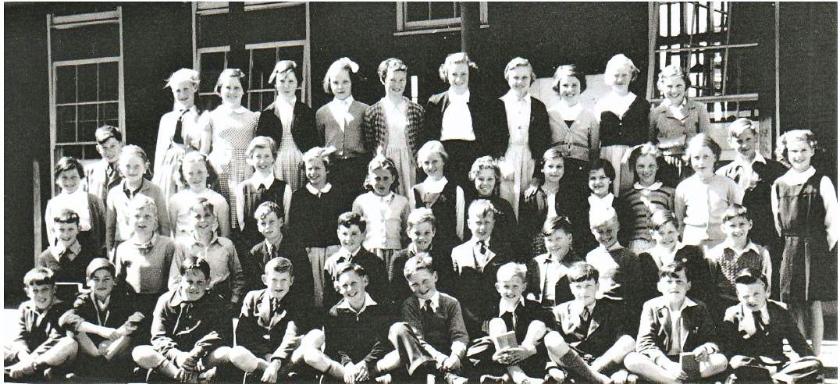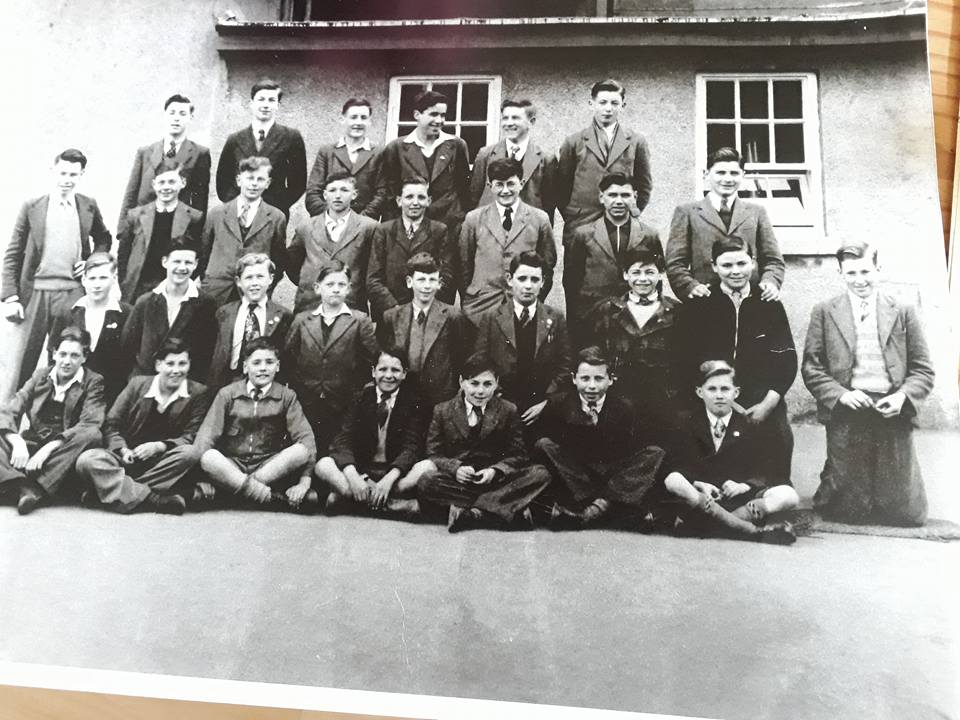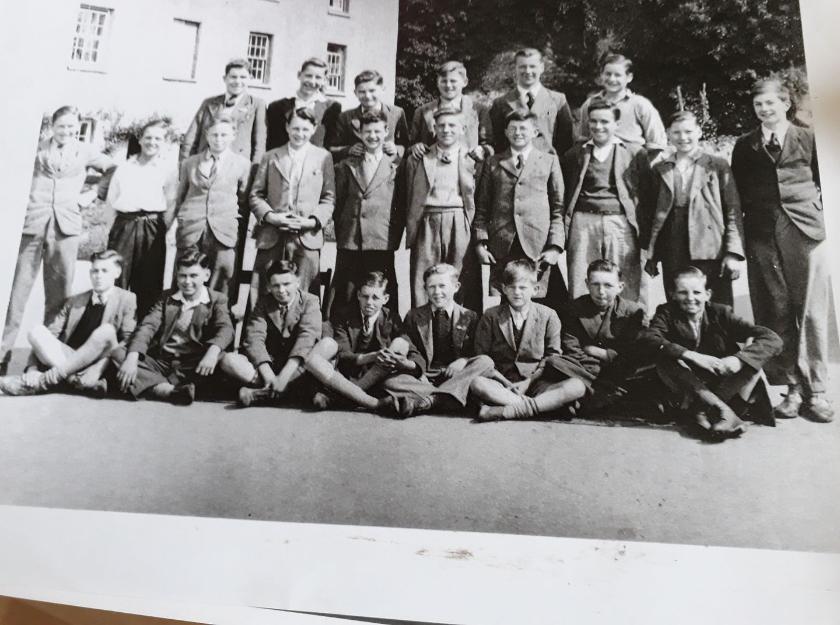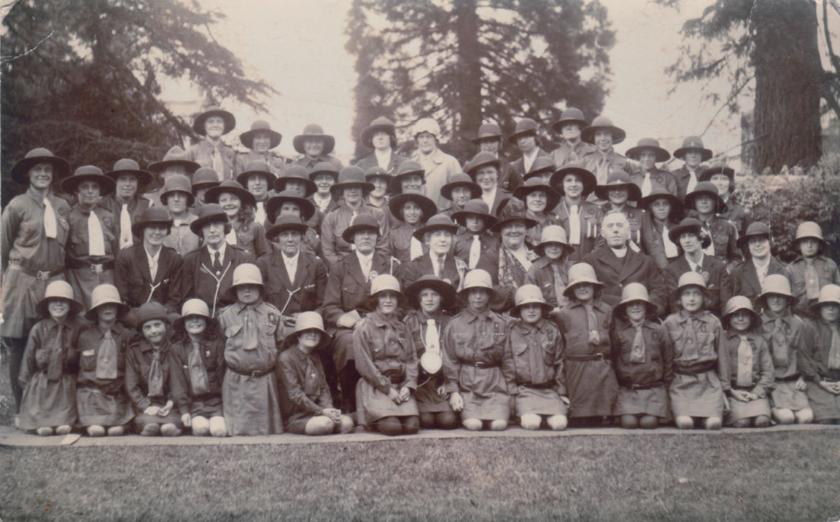

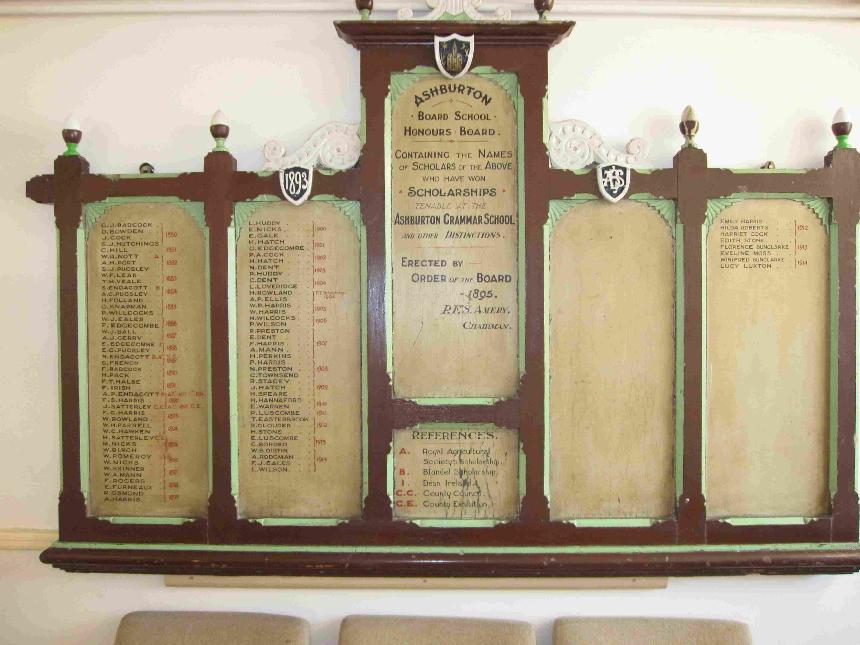
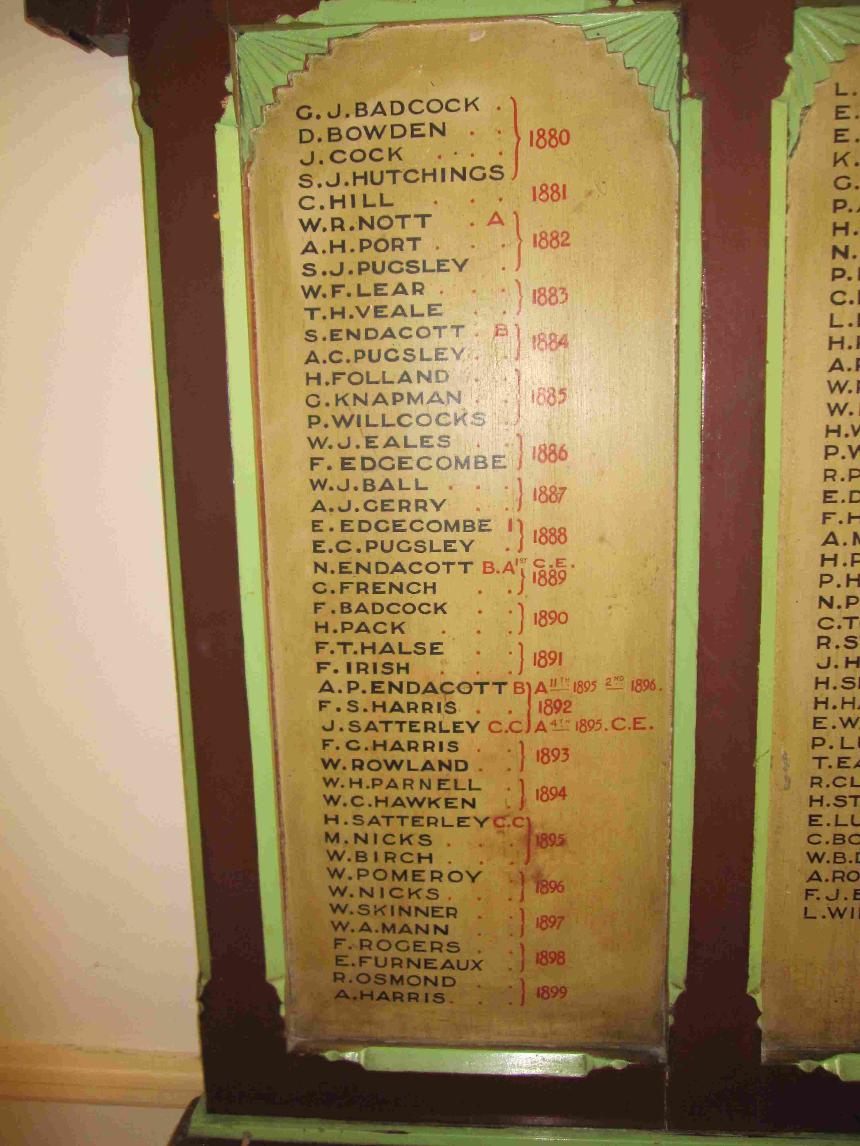
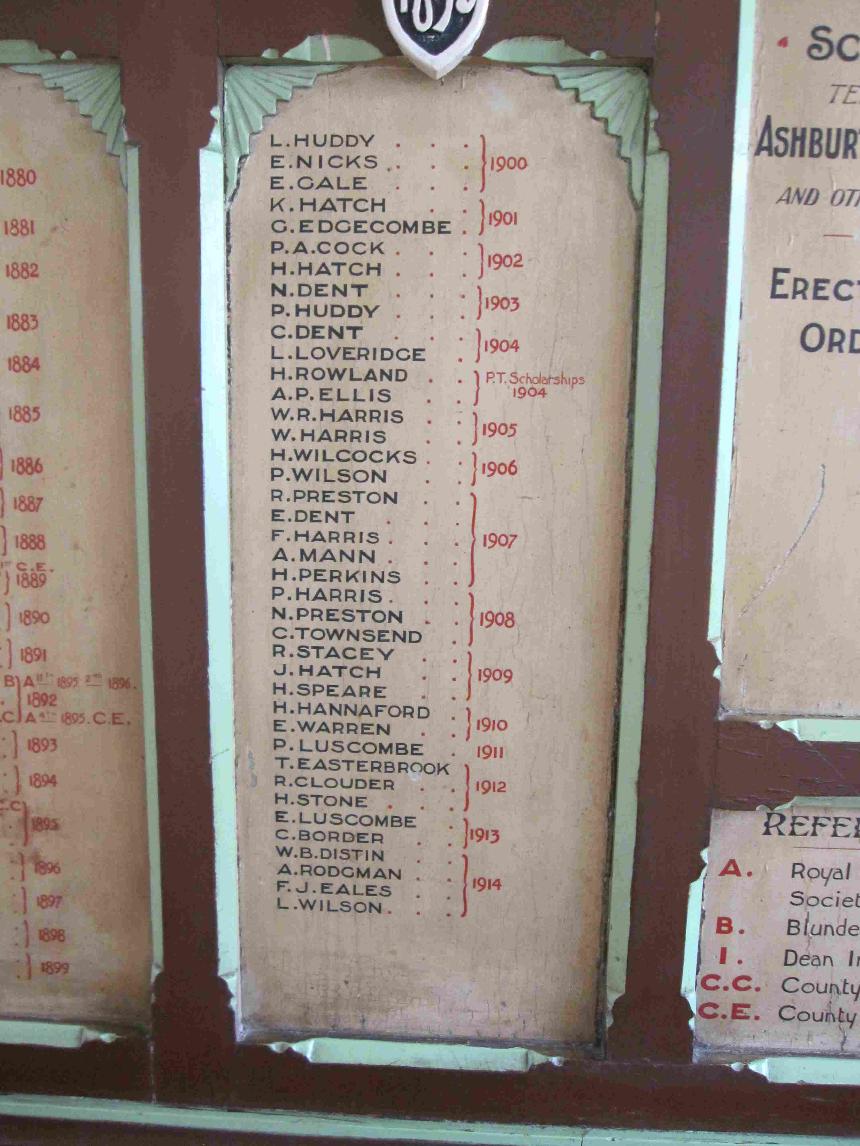
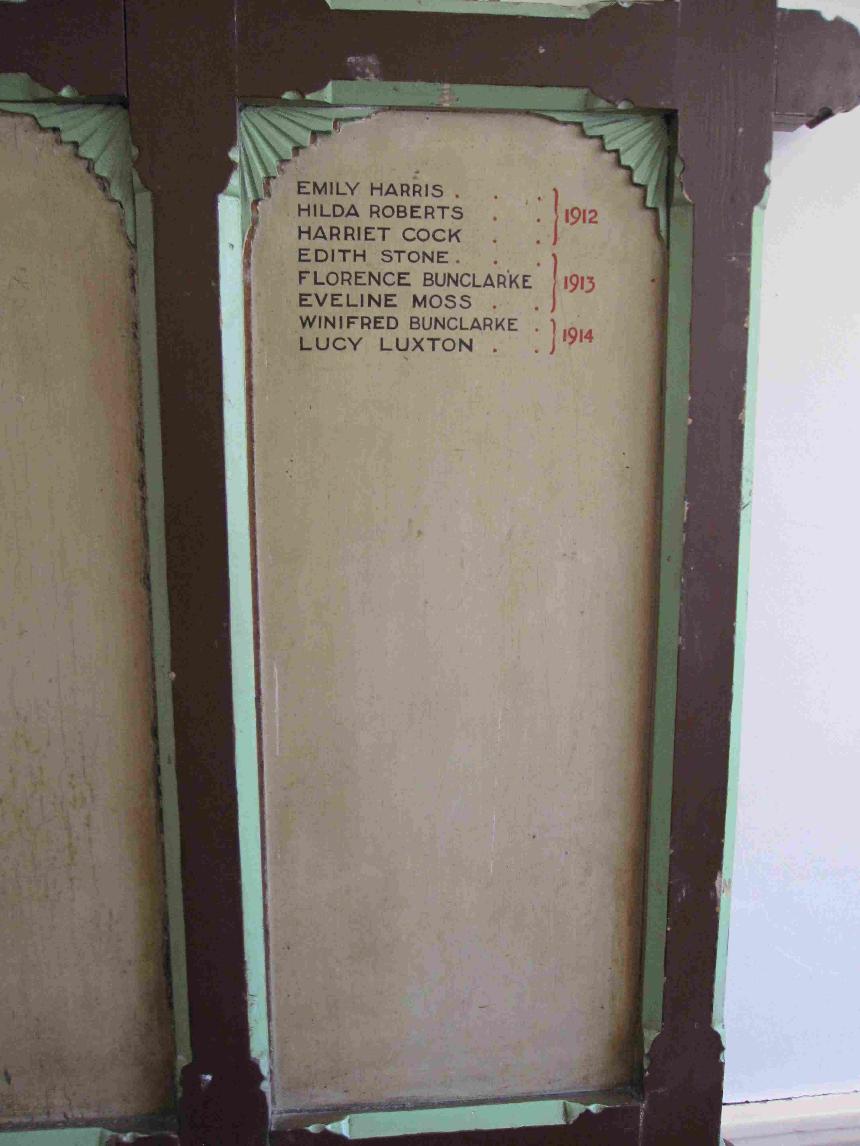
1677 John Ford founded a charity school endowed with £8 per annum, with funding provided by the Yarn Market. The market ceased trading in due course, and the endowment was lost.
1754 Lord Middleton and John Harris, MPs*, re-endowed a school with £640, the income coming from land investment (usually called the Bourne School, after the name of the estate which provided the income, or the Free School) .
*Ashburton at one time was represented in parliament by 2 MPs.
Ashburton and its neighbourhood Charles Worthy publ L. B. Varder, Ashburton 1875 p9
c 1764. William Gifford attended the Free School at about 8 years old 'Making most wretched progress.'
Quoted in Biography of self-taught men: with an introductory essay, B B Edwards and S g Bulfinch, Boston, J E Tilton and Company, 1859, pp 110 ff
1805 Miss Dunning gave £6 per annum to teach poor girls reading and sewing. The gift was made on condition that she, her nephew Richard and any descendants were buried in the 'Dunning vault' at the eastern end of the south aisle of the parish church, 'whilst there was room'.
Ashburton and its neighbourhood Charles Worthy publ L. B. Varder, Ashburton 1875, p x appendix
In 1830 the Western Times noted that the Bourne Estate was being let for £125 per annum. From two masters each employed at £40 per annum there had been a reduction to one master at £60. What, questioned the newspaper, had become of the surplus funds? Rather than just teach reading, writing and arithmetic, why not employ a Master and Mistress to provide an extended curriculum?
Western Times 1 May 1830 p2 col1
1850 'Out of the rent about £70 per annum is paid to the master and mistress for teaching about 50 free scholars on Dr. Bell's system*.....the school was rebuilt about 14 years ago at the cost of £640, and is commonly called Bourne School.'
History, gazetteer and directory of Devonshire, William White, 1850 p465. Freely available on http://books.google.co.uk - Accessed 25-9-2014
* Dr. Bell, born in 1753, advocated using the older puils to teach younger ones. This became known as the Monitorial
System.
http://drbells.co.uk
1850 Mr Wm Ferris Honeywill died, aged 55. He had been master at Lord Middleton's and Mr Harris' s Free School for 33 years.
Exeter and Plymouth Gazette 6 April 1850 p5 col6
Bournes' Free School, Bowling Green, George Jamieson Dick, masterSlater's Directory of Berks, Cornwall, Devonshire, 1852-53, p5
In 1851 22 year old George P. Dick is shown as a schoolmaster at Bowling Green, with his wife Elizabeth a schoolmistress.
1851 census HO107, Piece 1871, Folio 278, p39.
In February 1852 a vacancy occurred for the mastership of the Bourne's School. The Western Times described it as 'A noble charity, left by the donors for the instruction of the children of the poor inhabitants'.
Later that month Mr Samuel Husson, of the Newton Abbot Union School, was appointed to the post.
Western Times 14 February 1852, p7 col 4
Western Times 28 February 1852 p7 col5
The 1861 census shows 43 year old Samuel Husson as Schoolmaster and Mary Baker, his 27 year old step-daughter, as Schoolmistress.In the same household at Bowling Green is another step-daughter, 20 year old Elizabeth Baker, who is an Infant Schoolmistress.
1861 census RG9/1405, folio 79, p29, schedule 169
http://www.freecen.org.uk
A sum of money was by this time granted annually by Parliament for public education. The following extracts are from the Revised code of minutes and regulations of the Committee of the Privy Council on education 1862:
The grant is withheld altogether....(c) If the girls in the school be not taught plain needlework as part of the ordinary course of instruction.
55. In every school receiving annual grants is to be kept, besides the ordinary registers of attendance - (a) A diary or log-book....
56. The diary or log-book must be stoutly bound and contain not less than 500 ruled pages.
57. The principal teacher must daily make in the log-book the briefest entry which will suffice to specify either ordinary progress, or whatever other fact concerning the school or its teachers, such as the dates of withdrawals, commencements of duty, cautions, illness, etc.
64. The recognised classes of teachers are -
(a) Certified teachers
(b) Pupil-teachers
(c) Assistant teachers.
81. Pupil-teachers are boys or girls employed to serve to a school under inspection
(b) That the pupil-teachers be not less than thirteen years (completed) of age at the date of their engagement.
(c) Be of the same sex as the principal teacher of the school, or department of a school, in which they are employed; but in mixed schools, or departments of schools, under a master and mistress, female pupil-teachers may receive instruction out of school hours from the master, on condition that the mistress be invariably present during the whole time that the lessons are being given by the master, who must be husband, father, son, or brother of the mistress, and not both young and unmarried.
(5) The said pupil-teacher shall be liable to dismissal without notice for idleness, disobedience, or immoral conduct, of a gross kind respectively
Reports on Elementary Schools, 1852 - 1882, Matthew Arnold, Eyre and Spottiswoode, London 1901, appendix K pp 331 following
*******
Lord Middleton and Mrs Harris's Charity, Bowling Green - Samuel Husson, Master, Miss Mary Baker, Mistress
*******
The school day seems to have normally lasted until half past four, as the Headmaster noted when the school closed early because of the dark evenings (28 November 1879)
In March 1877 the fees were 1d (one penny) per child per week, but at the end of the month the governors passed a resolution to increase this to 2d per child per week (31 March 1877)
In the 1870's classes were mixed, but in 1879 the girls were separated into a department of their own (28 June 1879)
Log book 6020C/EFL1, held in the Devon Heritage Centre (formerly the Record Office)
*******
Getting children to attend the school was not easy. Here are some reasons for irregular attendance, from the school log book:
Whortleberry picking (28 Jul 1876)
Gleaning (28 Jul 1876)
Apple picking (27 Oct 1876)
Planting potatoes (24 March 1877)
Harvesting (8 September 1877)
Assisting parents in their gardens (9 March 1878)
Sometimes health issues reduced the numbers:
For example, Measles (12 April 1879)
Many of the children suffering from bad feet (20 December 1879)
And sometimes there were more pleasant reasons:
A holiday on Thursday because it was fair day (3 March 1877)
The annual treat of the independent Sunday School (23 June 1877)
A large menagerie arriving in the town - the school was almost deserted on this occasion (1 September 1877)
A company of the Royal Horse Artillery coming to the town (2 March 1878)
Boys watching the Grammar School athletics (13 April 1878)
Mr Pindar's Circus visiting the town - the school closed (27 March 1880)
Log book 6020C/EFL1, held in the Devon Heritage Centre
1887 James Barnett and Joshua Leaman were fined 2s 6d each for not sending their children to school.
Western Times 24 October 1887 p4 col4
An Inspector Calls
The school was inspected in March 1878. The report stated that the results were as good as could be expected 'under the circumstances'. Whilst praising the master's enthusiasm and energy, and saying that the writing was good (as was the older children's arithmetic), the inspector noted that discipline and organization did not exist at all. The method of conducting the school was, he said, 'most unsatisfactory'. (30 March 1878)
Log book 6020C/EFL1, held in the Devon Heritage Centre
*******
By the 1870s the Endowed Schools Commissioners had taken away the Bourne Estate - which provided income - and also wanted to take away a grant, or reduce the school to a 'third-grade school'.
At the same time, under the provisions of the 1870 Education Act, Ashburton had received notice from the Education Department that the town would have to provide accommodation for 480 pupils, including 15 from Woodland.
The Bourne School could only accommodate 250 children, so there were proposals to alter the school to meet with the requirements - the governors met to consider plans to enlarge the school in the first week of December 1877.
There was a public meeting about raising the necessary money - if this could not be done voluntarily, a School Board would have to be formed and 'enforced upon them'.
(Exeter and Plymouth Gazette, 4 January 1878, p8 col 5
Governors' meeting from Log book 6020C/EFL1, held in the Devon Heritage Centre (formerly the Record Office)
Sufficient money cannot have been forthcoming, because in June 1878 the Education Department in Whitehall issued orders for a School Board to be formed
London Gazette Issue 24594 18 June 1878, p 3661
In August the first meeting of the School Board was held at the Bourne School Room.
Watts, Whidborne and Co. (bank) were elected treasurers.
Members of the Board were:
Chairman - R Tucker
Vice-chairman - P F S Amery
J Tozer, H Steele,.W R Whiteway, E J Sawdye, Rev J W Lay
(Exeter and Plymouth Gazette, 2 August 1878, p7 col 2)
*******
Some staff in the late 1870's:
Mrs Harding - replaced Miss Baker as sewing mistress (9 October 1876)
John Addems had a holiday (21 July 1877)
J Adams' name removed from the register of Pupil Teachers in the school
Mr. Husson shortly to receive certificate. (13 April 1878)
William John Port signed his indenture as a Pupil Teacher (4 September 1879)*
John Mann appointed as candidate for Pupil Teacher (6 March 1880)
Log book 6020C/EFL1, held in the Devon Heritage Centre
* This may well have been the William John Port born March quarter 1864, Newton Abbot district (http://www.freebmd.org.uk/) - he would therefore have been 15 years old.
*******
According to Kelly's Directory of Devonshire 1902, The Board School, Bowling Green, was erected in 1879 on 'the site of the old Bourne School'. The cost, including the site, was £1050: the school had the capacity to hold 170 boys, 150 girls and 150 infants (average attendance quoted was 150 boys, 120 girls and 136 infants). There were 4 scholarships of £8 a year at the Grammar School for boys who had been educated at the Board School for at least one year.
Staff: William T Butchers, master
Miss Elizabeth Mary Channon, mistress
Mrs Amy Butchers, infants' mistress
Kelly's Directory of Devonshire, 1902, p31
*******
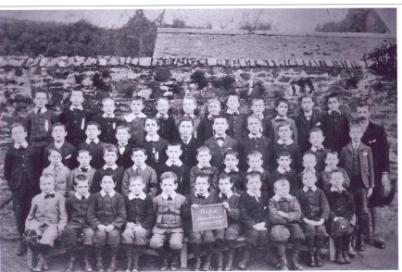
2nd left back row Dick Arscott
5th from left front row Reg Andrews
The 1901 census shows Richard Arscott living with his mother, grandmother and 5 siblings at Crockaton. He is 8 years old.
1901 census RG13, Piece 2053, Folio 29, p 23
In
1901 Reginald Stanley Andrews was 7 years old and living in North
Street. His father was George Henry Andrews, a baker and confectioner.
1901 census RG13, Piece 2053, Folio 41, p 13
Teacher - Mr. Butchers.
In
1901 William J Butchers* was a certificated Board School master, and his
wife, Amy J(ane), is a certificated Board School mistress. By 1911
William Joy Butchers was headmaster of the Council School. He was living
with his wife and children at Banks-Y-Brim, East Street.
1901 census RG13, Piece 2053, Folio 57, p14
1911 census RG14, Piece 12728, Schedule number 86
* William Tozer Butchers. He married Amy Jane Hext in the September quarter of 1896.
http://www.freebmd.org.uk
Amy
Butchers died in 1919, at which point William was both Portreeve and
headmaster of the Council schools. Amy had been headmistress of the
Infants' School for 25 years.
Western Times 18 September 1919 p3 col3
Information and photograph courtesy Wendy Major
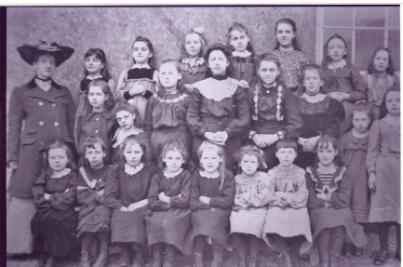
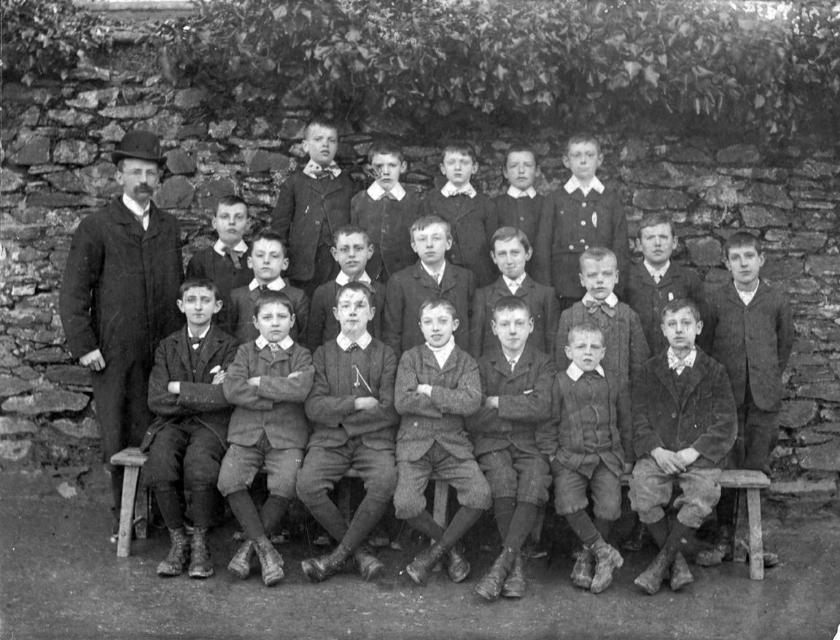
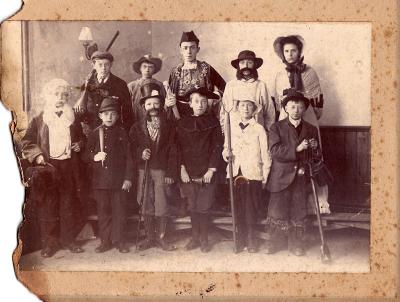
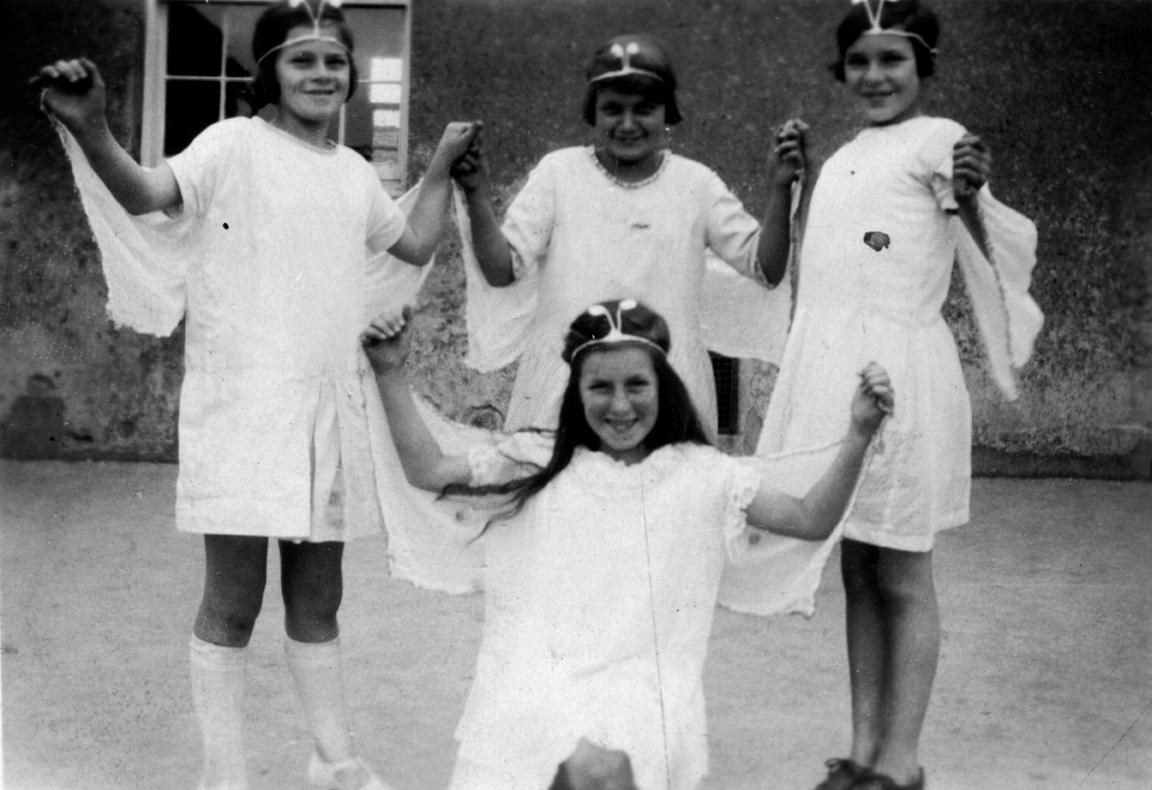
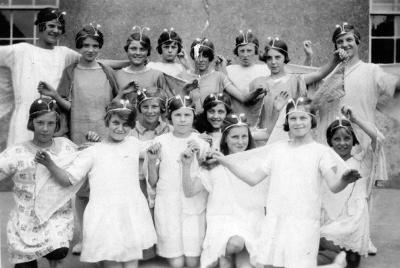
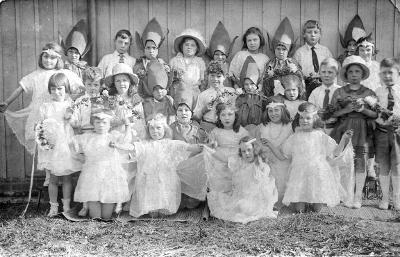
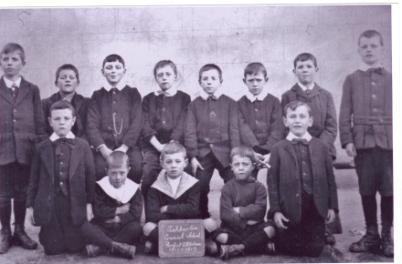
Left: Ashburton School Perfect Attendance 1912 -1913
Second from left back row Dick Northway
The Northway family were living at Great Bridge in 1911. Alfred and Susanna were the parents, and 10 year old Richard was one of 7 children. The census gives the information that the couple had 11 children altogether, of whom 10 survived.
1911 census RG14, Piece 12726, Schedule number 121
Richard became a blacksmith and worked for Mr French and Mr. Bill Tucker in St Lawrence Lane.
Ist right back row ? Aplin
2nd right front row Tommy Guest.
He became a tailor
Information and photograph courtesy Wendy Major
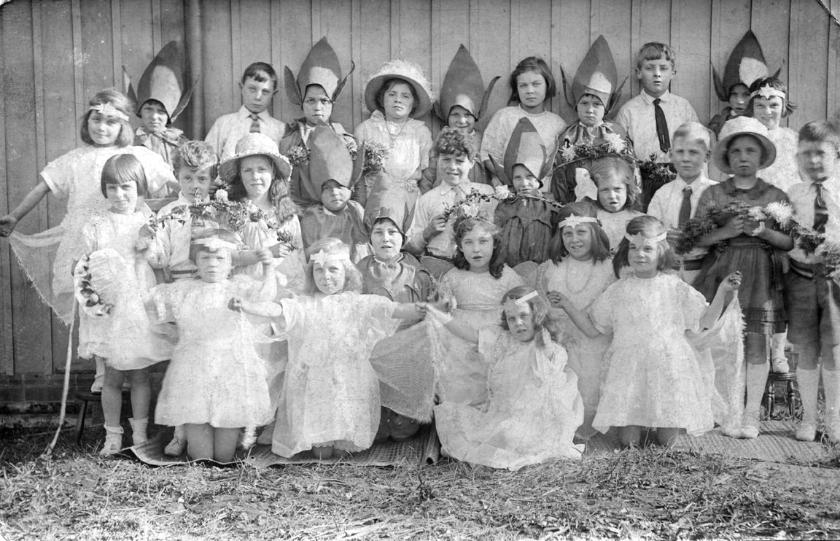
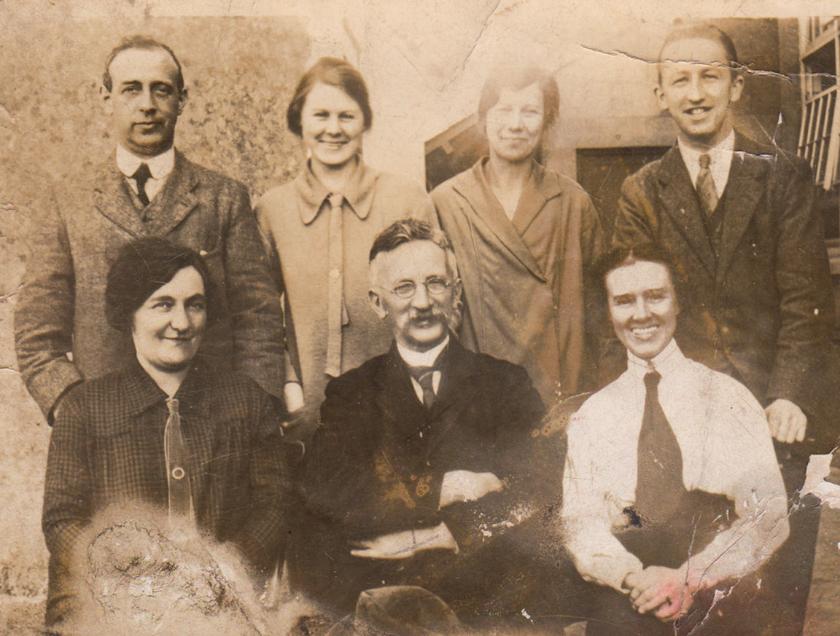
Right: Ashburton Council School 1926-7
Children believed to be:
Back row: Frank Lewis, Fred Gilbert, Not known, Michael Hobbs, Thomas Eales, Alexander Leaman, Edward Hare, Arthur Thorn, Not known, Leslie Vicary, not known, Mrs Simpson.
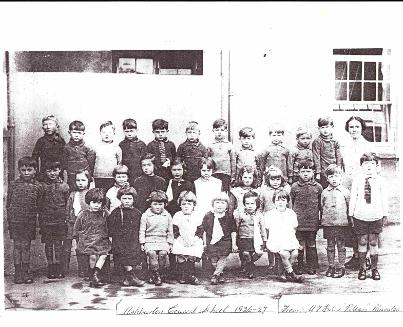
Thanks to Linda Phillips for the above item. Original information from Thomas Eales, Manaton, 1998
